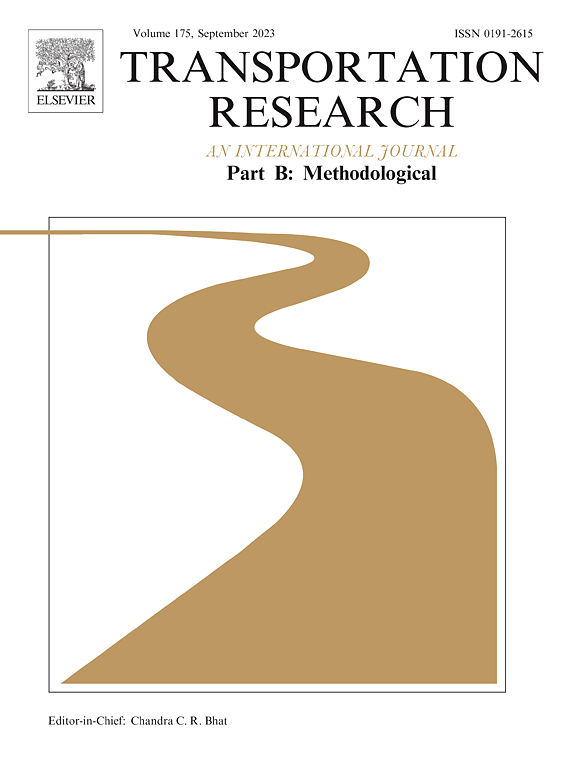一个连接消费者在公共交通使用中的优先事项和偏好的多特征-多方法模型
IF 6.3
1区 工程技术
Q1 ECONOMICS
引用次数: 0
摘要
陈述选择和最佳最差实验的相互关系激发了当前研究的核心问题;也就是说,一个共同的行为过程是否会引起对两种偏好诱导方法的反应。本文的基本前提是,一个共同的、潜在的行为过程导致决策者对两种偏好激发方法的反应;因此,可以映射两种方法之间的偏好异质性模式。我们使用混合logit的多性状-多方法规范来研究这一点,该规范具有以下两个定义特征:首先,将未观察到的偏好异质性来源划分为方法的一般成分,其次,每种方法的独特成分。核心发现表明,偏好异质性的共同潜在来源确实会引起决策者在陈述选择和最佳最差实验中的反应(遵循特定的理论结构)。我们的主要经验贡献是-在受试者设计中,数据是通过两种或多种偏好引出方法从相同的受访者中生成的-每种引出方法中相似属性的偏好异质性可以在经验上显示为收敛于同一来源。这仍然是这类先前研究的一个假设,但到目前为止,与使用不同偏好激发任务相关的方法效应已经混淆了结合属性优先级和偏好的联合估计模型的解释。我们的工作对交通研究人员的启示是,考虑到对这一核心假设的经验支持,最佳最差选择实验和陈述选择实验可以以互补的方式使用。本文章由计算机程序翻译,如有差异,请以英文原文为准。
A multitrait-multimethod model linking consumers’ priorities and preferences in public transport usage
The interrelatedness of stated choice and best worst experiments motivates the core question of the current research; that is, does a shared behavioural process given rise to responses to both preference elicitation methods. The basic premise of the paper is that a common, underlying behavioural process gives rise to the responses of decision makers to both preference elicitation methods; and therefore, the patterns of preference heterogeneity between both methods can be mapped. We investigate this using a multitrait-multimethod specification of mixed logit which has the following two defining characteristics: firstly, the partitioning of the unobserved sources of preference heterogeneity into components that are general to the methods and second, components that are unique to each method. The core findings show that common underlying sources of preference heterogeneity do give rise to decision makers’ responses in both stated choice and best worst experiments (following a specifically theorised stucture). Our primary empirical contribution is – for within subjects deigns where data is generated from the same respondents across two or more preference elicitation methods – that the preference heterogeneity for alike attributes in each of the elicitation methods can be empirically shown to converge on the same source. This remains an assumption in much prior research of this type, but until now, method effects related to the use of different preference elicitation tasks have confounded the interpretation of jointly estimated models that combined attribute priorities and preferences. The implications of our work for transport researchers is that best worst and stated choice experiments can be used in complementary ways – given the empirical support for this core assumption.
求助全文
通过发布文献求助,成功后即可免费获取论文全文。
去求助
来源期刊
CiteScore
12.40
自引率
8.80%
发文量
143
审稿时长
14.1 weeks
期刊介绍:
Transportation Research: Part B publishes papers on all methodological aspects of the subject, particularly those that require mathematical analysis. The general theme of the journal is the development and solution of problems that are adequately motivated to deal with important aspects of the design and/or analysis of transportation systems. Areas covered include: traffic flow; design and analysis of transportation networks; control and scheduling; optimization; queuing theory; logistics; supply chains; development and application of statistical, econometric and mathematical models to address transportation problems; cost models; pricing and/or investment; traveler or shipper behavior; cost-benefit methodologies.

 求助内容:
求助内容: 应助结果提醒方式:
应助结果提醒方式:


